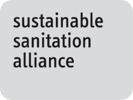Schlussbericht SANItärRecycling ESCHborn (SANIRESCH) (in German) Final report SANItaryRecycling ESCHborn (SANIRESCH) Winker, M., Rieck, C. (2013)
Bibliographic information
Winker, M., Rieck, C. (2013). Schlussbericht SANItärRecycling ESCHborn (SANIRESCH) (in German) Final report SANItaryRecycling ESCHborn (SANIRESCH) Deutsche Gesellschaft für Internationale Zusammenarbeit (GIZ) GmbH, Eschborn, Germany
Filter / Tags
OtherGreywater or wastewaterUrineUrban (entire city)German
Downloads
Schlussbericht SANItärRecycling ESCHborn (SANIRESCH) (in German)
Type: application/pdf
Size: 9.36 MB

Published in: 2013
Pages: 0
Publisher:
Deutsche Gesellschaft für Internationale Zusammenarbeit (GIZ) GmbH, Eschborn, Germany
Author(s):
Winker, M., Rieck, C.
Uploaded by:
GIZ
Deutsche Gesellschaft für Internationale Zusammenarbeit (GIZ) GmbH
Location of library entry:
